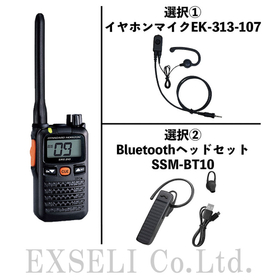WIKAの多くの圧力計のケース上部に黄色いレバーの形をしたベントバルブが付いています。どの様な役割を持っているのか説明します。
WIKAの多くの圧力計のケース上部に黄色いレバーの形をしたベントバルブが付いています。製品の納入時にはバルブは閉じられていますが、圧力計が正しく機能させるために、本来であれば試運転時にバルブを解放する必要があります。 気密性の高い圧力計の内圧は、直射日光などの温度変化により変化します。ケース内の圧力変化によって、圧力計の精度偏差が許容できないほど大きくなることもあります。圧力計のケース内と大気圧間の圧力補正はベントバルブによって行われます。 しかし、すべてのWIKA圧力計にベントバルブが付いているわけではありません。より高い保護等級が必要な場合は、ケースの背面に取り付けられたダイアフラムを介して圧力補正が行われます。16 bar以上の圧力範囲では、圧力計ケース内の圧力上昇によって生じる測定誤差を無視することができ、圧力計は指定された精度内で動作します。 黄色いレバーが閉じているのは何故でしょうか? 圧力計は通常、水平にして持ち運びます。充填された圧力計のベントバルブを開けたままにしておくと、封入液が計器の外に漏れてしまいます。 輸送中にはオイル漏れを防ぐために閉じてください。
この製品へのお問い合わせ
基本情報
WIKAの多くの圧力計のケース上部に黄色いレバーの形をしたベントバルブが付いています。製品の納入時にはバルブは閉じられていますが、圧力計が正しく機能させるために、本来であれば試運転時にバルブを解放する必要があります。 気密性の高い圧力計の内圧は、直射日光などの温度変化により変化します。ケース内の圧力変化によって、圧力計の精度偏差が許容できないほど大きくなることもあります。圧力計のケース内と大気圧間の圧力補正はベントバルブによって行われます。 しかし、すべてのWIKA圧力計にベントバルブが付いているわけではありません。より高い保護等級が必要な場合は、ケースの背面に取り付けられたダイアフラムを介して圧力補正が行われます。16 bar以上の圧力範囲では、圧力計ケース内の圧力上昇によって生じる測定誤差を無視することができ、圧力計は指定された精度内で動作します。 黄色いレバーが閉じているのは何故でしょうか? 圧力計は通常、水平にして持ち運びます。充填された圧力計のベントバルブを開けたままにしておくと、封入液が計器の外に漏れてしまいます。 輸送中にはオイル漏れを防ぐために閉じてください。
価格情報
3,000円~500,000円 製品仕様により価格は変動します。
価格帯
1万円 ~ 10万円
納期
※ご注文後2~3ヵ月
用途/実績例
詳細については弊社までお気軽に問い合わせ願います。
カタログ(3)
カタログをまとめてダウンロード企業情報
「WIKA」はドイツに本社を置く、世界的な計測機器メーカーです。70年以上に渡り、計測機器専門メーカーとして、世界市場で計測機器のトップクラスシェアを維持しています。プラント設備など製造業において広範囲で使用される圧力計・温度計をはじめとする計測機器のヨーロッパシェアNo.1・世界トップクラスメーカーです。現在、全世界40か国以上に展開し、総従業員数9,000名を誇るグローバル企業です。日本支社においては、業績は右肩上がり、大手重工メーカー含め幅広い業界の大手企業と取引実績があります。「計測機器はWIKA」と言われる程にグローバル規模でブランド力が高く、製品力があります。世界40ヶ国以上に拠点があるため、日系企業の海外進出が活発になるにつれて引き合いも強くなり、製品設置後のフォロー含め全て同社で対応できる点が強みです。他競合にはない幅広い製品を揃えているため、顧客のニーズに対して包括的なソリューションを提供する事ができます。














